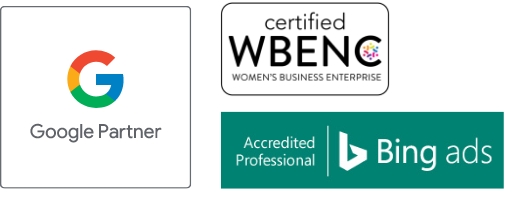
Empower Your Insurance Brand: 7 CMO Strategies to Drive Growth
The role of the chief marketing officer in the insurance industry is evolving. In many insurance companies, especially those driven by sales rather than marketing, CMOs often find their influence undervalued and their strategic insights overlooked. However, as insurers navigate the complexities of digital engagement, customer expectations, and evolving regulatory landscapes, CMOs can position themselves as key players in shaping their companies’ future.
Traditionally seen as leaders of branding and advertising efforts, CMOs in insurance can now take on a more strategic role in driving transformation. This blog post, inspired by the EY article “Why CMOs Should Be Central to Every Transformation,” explores how insurance CMOs can drive meaningful change in their organizations. If you’re a CMO in insurance looking to expand your influence, here are seven strategies to get started.
1. CHAMPION A CUSTOMER-CENTRIC CULTURE
The insurance industry is increasingly focused on improving customer experience and personalization. CMOs can lead the charge by embedding a customer-first mindset throughout the organization. By leveraging data insights to understand policyholder behaviors, pain points, and expectations, CMOs can ensure that transformation efforts align with client needs while adhering to industry regulations such as NAIC guidelines and state insurance laws.
Idea to Consider: Host cross-departmental workshops to share customer feedback and ensure that teams, from underwriting to claims processing, understand their role in enhancing the policyholder experience.
2. LEAD DIGITAL TRANSFORMATION EFFORTS
Digital transformation in insurance extends beyond adopting new technologies; it’s about reimagining how customers interact with insurers. CMOs can drive this shift by integrating AI-driven personalization, automation, and digital platforms to enhance the policyholder experience.
Idea to Consider: Conduct a digital audit of the policyholder journey to identify areas where automation, AI-driven insights, and self-service options can be optimized to improve engagement and satisfaction.
3. BREAK DOWN SILOS THROUGH CROSS-FUNCTIONAL COLLABORATION
Transformation efforts often stall when departments work in isolation. CMOs can serve as connectors, ensuring that marketing, underwriting, claims, and IT teams work together toward common objectives. By fostering collaboration, CMOs can create a seamless policyholder experience, ensuring that marketing efforts align with regulatory requirements and business goals.
Idea to Consider: Establish a cross-functional task force with representatives from marketing, underwriting, claims, compliance, and technology to drive real-time collaboration and problem-solving.
4. ADVOCATE FOR DATA-DRIVEN DECISION-MAKING
Data is a critical asset in the insurance industry, informing everything from risk assessment to customer retention strategies. CMOs can take the lead in ensuring that marketing and business strategies are guided by real-time analytics and insights. By championing data-driven decision-making, CMOs can help their organizations optimize customer engagement and maximize profitability while remaining compliant.
Idea to Consider: Develop a centralized analytics dashboard to track key policyholder engagement metrics, marketing performance, and business impact, ensuring data is transparent and accessible across departments.
5. FOSTER AGILITY AND INNOVATION
With the rise of insurtech, changing regulations, and evolving customer expectations, insurers must be agile to remain competitive. CMOs can foster a culture of innovation by piloting new digital marketing strategies, testing emerging insurance products, and adapting to market trends.
Idea to Consider: Launch an internal “innovation lab” where teams can prototype and test new marketing strategies, digital tools, or customer engagement initiatives.
6. MEASURE AND COMMUNICATE ROI
Proving the value of insurance marketing is crucial for transformation efforts. CMOs must quantify how marketing initiatives contribute to key business objectives, such as policyholder acquisition, retention, and revenue growth. Demonstrating measurable ROI helps validate marketing’s strategic value in driving transformation.
Idea to Consider: Integrate ROI tracking into all marketing and transformation initiatives, highlighting metrics such as policyholder lifetime value, digital adoption rates, and claims processing efficiency improvements.
7. LEAD BY EXAMPLE
Organizational transformation starts with leadership. CMOs must model the adaptability, transparency, and data-driven mindset they want to see across the company. By setting the tone, they can inspire teams to embrace innovation and execute transformative strategies effectively.
Idea to Consider: Schedule regular leadership briefings to share transformation progress, reinforce strategic priorities, and engage teams in continuous improvement initiatives.
OPPORTUNITIES TO DRIVE TRANSFORMATION
By embracing transformation, insurance CMOs can move beyond traditional marketing responsibilities and secure their position as indispensable leaders in their organizations.
Start small: Champion customer-centric strategies, leverage digital tools, foster collaboration, and demonstrate measurable impact. Transformation isn’t easy, but for insurance CMOs ready to take the lead, it’s a chance to redefine their role and drive business success.
Interested in expanding your influence within your insurance business and driving meaningful transformation? LIGHTSTREAM can help. Contact us today.
